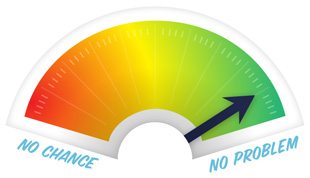Will Toronto really adopt 30-kilometre-per-hour speed limits on residential streets?
THE IDEA
Toronto has long flirted with the prospect of reducing the speed limits on its residential streets to 30 kilometres per hour. Lately, Ward 22 councillor Josh Matlow has championed the old idea with new vigour. “I have spoken to countless parents who want to see the city do everything it can to protect kids, along with all pedestrians,” he told the Toronto Star earlier this month as council considered new policies that would make it easier for residential streets to adopt lower speed limits. According to data from the World Health Organization, a pedestrian has a 90 per cent survival rate if hit by a car travelling at 30 kilometres per hour, while the rate at 45 kilometres per hour is less than 50 per cent.
WOULD IT WORK?
New York City, San Francisco and London, England, are among the cities worldwide that have already reduced limits to comparable speeds. When Toronto’s public works committee met to discuss the idea, however, it couldn’t agree on whether it wanted to follow suit; the new proposals, which would let an individual street adopt a 30-kilometre-per-hour limit if it met certain criteria, seemed like they might create a grid in which speed limits would fluctuate from block to block.
On April 14, though, the Toronto and East York Community Council voted unanimously to put those proposals aside and start the process of implementing the lowered speed limit on all residential roads in the 12 wards that comprise the old city of Toronto and East York. Because city council delegated the matter to the community council, that decision is virtually final—in other words, it doesn’t need to be carried by city council, though it will need to withstand a study by city staff and a second community council vote, likely in June.
Matlow claims that the residents of the 12 wards in question support a lowered speed limit, and he says the plan is worth its price tag. A new sign costs about $225 to manufacture and install; with thousands of signs to be replaced, the change could cost up to several hundred thousand dollars.
Transportation consultant and former councillor Richard Gilbert doesn’t see public outcry as much of a barrier to the lower limit’s implementation. “I think you’d find, if you asked people on most streets in the old Toronto and East York, they would support this,” he says, pointing to vocal supporters that have already fought for, and won, 30-kilometre-per-hour limits on individual residential roads. Critics of the plan, he explains, are likely to be located farther from the city’s core, in city suburbs and other parts of the GTA.
The real question, Gilbert says, is whether the lowered speed limit will truly foster a culture of safer driving in Toronto. “I think it would take quite a bit of time to reach that point where this is considered to be the norm as well as the rule,” he says. “You have to have a measure of enforcement and, where you can and it’s not going to cost too much, refashion streets so that people are less likely to drive fast on them.”
Regardless of whether or not they have their intended effect, though, lowered speed limits are well on their way to becoming a reality.





